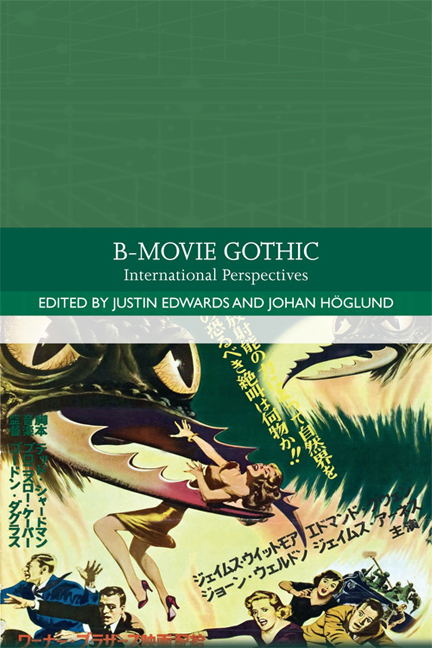5 - Mummies, Vampires and Doppelgängers: Hammer’s B-Movies and Classic Gothic Fiction
Published online by Cambridge University Press: 06 May 2021
Summary
The Gothic literary movement came to haunting, bloody life in the British Isles in the 1790s. Like some dead, repressed thing it clawed its way out of the English, Irish and Scottish subconscious and took hold of the popular imagination of the nineteenth century. In 1930s and 1940s Britain, however, the cinema was to have none of it. Horror was at this time all but completely censored into oblivion, or it was refused a certificate entirely. And even if a picture did receive an ‘H’ certificate (for ‘Horror’), children were forbidden to see it, which meant that English studios would often avoid releasing horror pictures altogether, whether because of the censors or the special effects (both affecting cost and revenue). The outcome was to result in Hollywood's iron grip on the monster market. Even still, it was to be a market in touch with its roots across the Atlantic. The Gothic horror that kept American film studios afloat during the Great Depression of the 1930s was, after all, at its heart British Gothic horror, through such classics as Dracula (alongside the Spanish-language version filmed and released concurrently), Frankenstein (1931), Dr Jekyll and Mr Hyde (1931), The Mummy (1932), Bride of Frankenstein (1935), Werewolf of London (1935), Dracula's Daughter (1936) and Son of Frankenstein (1939). Gothic horror never lost its British accent either, even in America. For, indeed, many of the films that helped to found the horror genre in Hollywood not only had their roots in English Gothic literature, but were performed by British expatriates who, unlike many American silent film stars, already had ready-made stage acting and, in particular, speaking experience, actors like Boris Karloff (Frankenstein), Charles Laughton (Island of Lost Souls), Elsa Lanchester (Bride of Frankenstein), Herbert Bunston (Dracula), Ernest Thesiger (Bride of Frankenstein), Claude Rains (The Invisible Man), Bramwell Fletcher (The Mummy), Lionel Atwill (Mark of the Vampire, Son of Frankenstein), Elizabeth Allan (Mark of the Vampire), Lester Matthews (Werewolf of London) and others. The result was to give early Gothic horror films a certain authenticity and quality that, arguably, elevated them from ‘B products’, in the process enabling them to resonate, in profound ways, with American audiences. Unfortunately, even this could do little to keep American horror pictures fresh and new. Times were changing, and technology booming.
- Type
- Chapter
- Information
- B-Movie GothicInternational Perspectives, pp. 83 - 94Publisher: Edinburgh University PressPrint publication year: 2018



